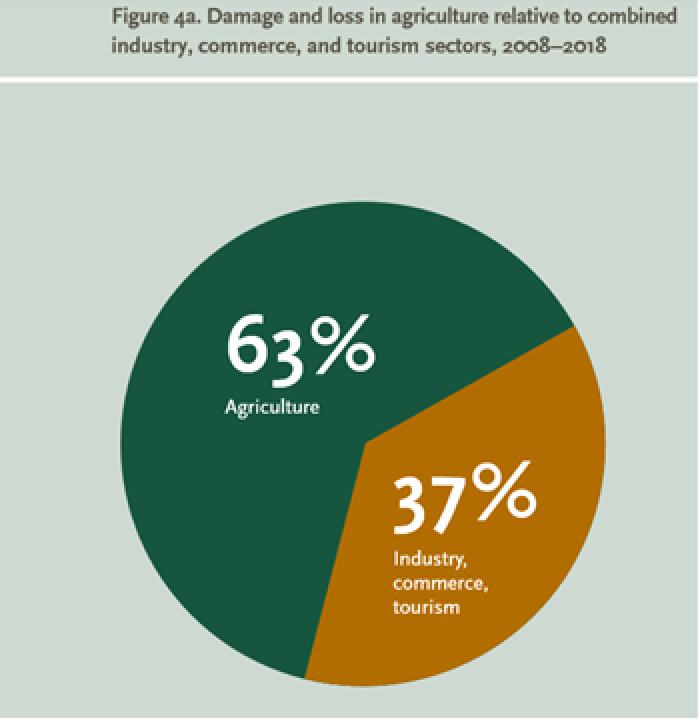This report constitutes a further step towards bridging persistent knowledge gaps and fostering a better understanding of how agriculture is affected by disasters. Extreme events such as drought, floods, storms, tsunamis, wildfires, pest and disease outbreaks exert a heavy toll on agriculture and all its sectors: crops, livestock, forestry, fisheries and aquaculture. Their growing frequency and intensity, along with the systemic nature of risk, are jeopardizing our agri-food systems. Least developed countries and lower-income countries are often among the most affected, with cascading consequences for value chains, food security and even national economies. Increased risk exposure has become the ‘new normal’ and the impact of climate change is set to exacerbate these challenges even further. Proactive risk reduction is imperative in the efforts to design a sustainable future. Resilience and disaster risk reduction (DDR) therefore must become an essential and integral part of modern agri-food systems.
To be effective, national strategies on DRR, emergency response, resilience and climate change adaptation must be firmly grounded in a comprehensive understanding of the particular impact disasters have on agriculture, including:
- Identifying damage and loss patterns;
- Providing subsectoral breakdowns of impacts on crops, livestock, forestry, fisheries and aquaculture;
- Building profiles of all disaster types: from rapid-onset large-scale catastrophes such as hurricanes, to events that develop slowly over time such as drought, as well as small-scale localized or ‘silent’ disasters, which are often unreported but can be detrimental to livelihoods of small-scale farmers;
- Expanding beyond the impacts of natural hazard-related disasters to consider broader threats, such as pandemics, food chain crises, conflicts and protracted crises;
- Navigating the nexus of disaster assessment, risk reduction and climate change adaptation.
This report lays out the latest thinking and cutting-edge analysis addressing these issues.

| Year of publication | |
| Publisher | FAO |
| Geographic coverage | Global |
| Originally published | 22 Mar 2021 |
| Knowledge service | Metadata | Global Food and Nutrition Security | Food security and food crisesClimate extremes and food securityFisheries and aquaculture and food and nutrition securityCOVID-19 and Food and Nutrition SecuritySustainable Food Systems | Extreme weather eventFood supply chainFood systemHazardLocustPest and disease |
| Digital Europa Thesaurus (DET) | Agriculturenatural disasterclimate changedroughtforestdisaster risk reductionresiliencefood security |
